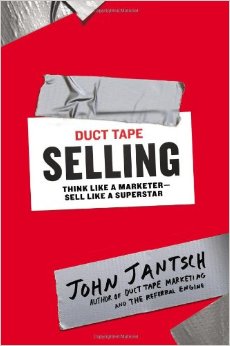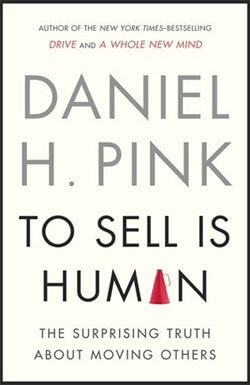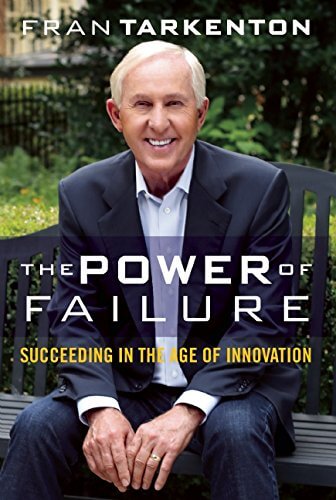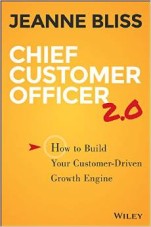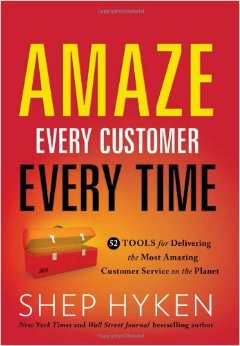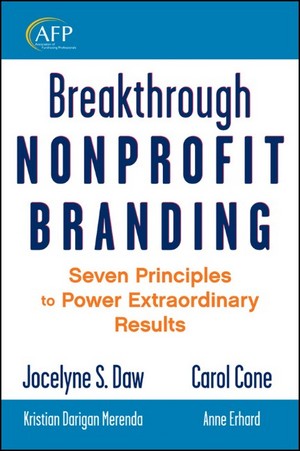Advertising
 When my nonprofit marketing colleague, Nancy Schwartz of the Getting Attention blog, asked me to write about my dream for the nonprofit community this year, it didn’t take long to come up with one. In reality, I could write an entire book on the subject, but I narrowed it down to one dream.
When my nonprofit marketing colleague, Nancy Schwartz of the Getting Attention blog, asked me to write about my dream for the nonprofit community this year, it didn’t take long to come up with one. In reality, I could write an entire book on the subject, but I narrowed it down to one dream.
My dream is for donors and nonprofit leaders to recognize that charitable organizations cannot thrive and live their missions without an investment mentality. During the economic downturn of the past few years, many nonprofits came to realize that they must compete with gazillions of competing messages for attention and donations. The “smarter” ones recognized that they couldn’t do that in a vacuum without investing something in marketing.
Marketing is NOT a frill, a luxury, or a waste of time. Marketing communication gets donors’ attention through multiple channels: e-mail, social media, print collateral, advertising, etc. If I had a dollar for every time I heard a fundraiser say, “We’re the best kept secret in town,” my bank account would be richer.
In so many ways, being the best kept secret is a sign of defeat. It means that the organization has no real strategy for generating revenue. Maybe it’s operating from hand to mouth. Maybe its plan is a wish and a prayer to stay alive for another year. Perhaps, it relies solely on event fundraising. But, is that a clever business move?
Operating a nonprofit is akin to running a business. It takes the same infrastructure as any business: physical location, employees, I.T., finance systems, and more. Ideally, each organization should have a business plan, marketing plan, and fundraising plan. Yet, many don’t.
Passion and dedication on their own cannot guarantee success. Investing in marketing the organization contributes to its brand awareness, sustainability, and growth. When donors learn about the mission, understand the value of the charity’s programs and services, and relate to the nonprofit’s stories of success, only then can the nonprofit build momentum.
This does not necessarily require big bucks either. There are countless inexpensive and yes, free ways to market a charitable cause.
Educating donors is everyone’s responsibility in the nonprofit sector. Apologizing for investing in marketing devalues its worth. Most consumers recognize that every product and service they purchase is a result of marketing. We need to help them understand that there is no difference in the nonprofit sector.
It’s a good time to reiterate one of my sayings:
No marketing, no money, no mission.
Let’s spread the word to charities and donors and help do some good!
 Of all the marketing studies I have read this year, most have underscored the popularity and ubiquity of digital marketing as the “be all and end all.”
Of all the marketing studies I have read this year, most have underscored the popularity and ubiquity of digital marketing as the “be all and end all.”
Until now.
In “Click Here: The State of Online Advertising - New insights into the beliefs of consumers and professional marketers” October 2012, research firm Edelman Berland, on behalf of Adobe, reports some interesting findings.
Traditional media is considered to be the best for marketing and advertising by consumers and marketers. Holy cow!
Take a look. Newspapers, TV, word of mouth, and print publications top the list. Maybe someone should tell newspaper and magazine subscribers? 

So, what do you think? Will you be taking a fresh look at print marketing now?
Sorry, Facebook. With all the tumult after your IPO went public, and the ensuing law suits, the newest research results don’t bode well for you.
According to a recent Ad Age/Citibank Facebook Survey, “Nearly 86% of those surveyed say they currently use Facebook as a marketing tactic. Only 55%, however, say they currently advertise on Facebook, and nearly 88% said they would implement Facebook content without advertising at all.”
While 72% said they expected their social-media advertising budget to increase, only 56.6% said they thought their Facebook advertising budget would increase, while nearly 40% believed it would stay the same.”
The survey results also revealed that marketers are confused when it comes to calculating their return on investment on Facebook, and how to compare that to spending in other social and traditional media channels. Frankly, this co-relates to many other recent studies that demonstrate social media measurement, in general, has been a challenge.
Are you advertising on Facebook? What have been YOUR results?
 In light of President Obama’s announcement that he supports gay marriage, I thought it would be à propos to examine the lesbian, gay, bisexual and transgender (LGBT) market.
In light of President Obama’s announcement that he supports gay marriage, I thought it would be à propos to examine the lesbian, gay, bisexual and transgender (LGBT) market.
According to an updated analysis by Witeck Communications, the total buying power of adult LGBT individuals is projected to be $790 billion this year. The LGBT community is a big market, totaling 15 - 16 million people; that’s 6.7% of the U.S. population.
Now, pay close attention:
- Almost half (47%) of LGBT adults are more likely to purchase a company’s products or services when an advertisement has been tailored to an LGBT audience.
- Nearly three-fourths (74 %) of LGBT adults are likely to consider brands that support nonprofits and/or causes that are important to them as a LGBT person. (Charities, take note.)
- Nearly nine out of ten (87 %) LGBT adults say they are likely to consider a brand that is known to provide equal workplace benefits for all of their employees, including gay and lesbian employees. Plus, nearly half (49%) of LGBT adults say that they are extremely or very likely to consider these brands.
- Seven out of ten (71 %) LGBT adults said they are likely to remain loyal to a brand they believe to be very friendly and supportive to the gay, lesbian, bisexual and transgender community “even when less friendly companies may offer lower prices or be more convenient.
- Nearly half (47 %) of LGBT adults are more likely to consider purchasing a company’s products or services when they see an advertisement that has been clearly tailored to “a gay audience with gay imagery and people and speaks to me as a gay person.”

Resource:
Harris Interactive and Witeck-Combs Communications, “LGBT Adults Strongly Prefer Brands That Support Causes Important to Them and That Also Offer Equal Workplace Benefits” (2011)
Not only has JC Penney rebranded its stores and image, it’s also taken a position on what constitutes motherhood in America. In its recent Mother’s Day newspaper insert, the company uses storytelling to showcase its products for mothers.
Each page tells the story of a different mother and her family. The first one has an East Indian-American woman and her three daughters. The second shows a mother with her special needs child, her sisters and mother. The third has a single mother with her three daughters and granddaughter. And, then comes the fourth:
The story of a mother with her two daughters, her mother and her same-sex partner. Yes, you read that correctly.
It appears that some people weren’t too thrilled with this definition of the American family. Take the outspoken group, One Million Moms, the “pro family advocacy” organization, for example.
By jumping on the pro-gay bandwagon, JC Penney is attempting to gain a new target market and in the process will lose customers with traditional values that have been faithful to them over all these years,” OMM, a division of the American Family Association wrote on its Web site.”
“We want to be a store for all Americans,” Penney’s spokeswoman Kate Coultas said. “Our May book honors women from diverse backgrounds.”
Well, in the 1950s and into the early 1960s, single and divorced mothers were looked upon negatively. These women were labeled and criticized by many within their communities. And look what happened over time.
Our views and perspectives evolve - what was taboo at one time or another, becomes mainstream soon enough when there’s general acceptance. The more advertisers that portray diverse families of all kinds, the more accepting our society will become of the differences.
I realize that in the case of same-sex partners or spouses, religious groups feel that they cannot be accepting because of their religious doctrines. I understand their difficulty with this. Yet, when all is said and done, the U.S. was founded on rights for all, no matter what their backgrounds, cultures, or orientations, as long as they don’t break the law. And, even then, laws change and evolve, too, to accommodate what societies adopt as the “norm.”
So, kudos to JC Penney for honoring all women and setting a positive example!

Ad copy:
You’ll often find Wendi, her partner, Maggie, and daughters elbow-deep in paint, clay or mosaics. “Even as babies, the girls toddled around in diapers, covered in paint,” said Wendi. They come from a long line of artists, which includes grandma Carolyn. Visiting her art studio in Greenbury, Texas is a favorite outing. And like any grandma, this one loves to bake – pottery, that is.
Just when we thought that traditional media channels were dying a slow death comes Nielsen’s Global Advertising Trends - Q4 2011. Worldwide advertising spend on TV, magazines, newspapers, and radio posted a 7.3% rise year-over-year in 2011 to $498 billion.
Data indicates that all four major media types rose on a global basis in 2011, with TV leading the way at 10.1% growth. But, in the US, advertising spend decreased year-over-year by 0.2% in Q4, but rose 2% for the year overall. Outdoor advertising expenditures grew 7.7% year-over-year, while cinema spend rose a more modest 2.3%.
Realistically however, marketers know that digital channels are seeing tremendous growth, even as traditional media struggles to maintain some market share. Global Internet advertising rose 16% year-over-year in 2011 to reach $84.8 billion and makes up more than 17% of all global measured advertising expenditures. Regionally, North America led with an estimated $34.5 billion.
Where we end up is a crap shoot. Will multichannel marketing - integrating traditional and digital channels - gain more traction with marketers? Will traditional channels sputter in a slow death knoll? What do you think?
Source: MarketingCharts

 Did you know that in the early days of radio, advertisers owned and controlled entire programs? Sponsors ruled the air waves with variety, comedy, drama, live music, and quiz shows. Where do you think the "soap opera" got its name?
Did you know that in the early days of radio, advertisers owned and controlled entire programs? Sponsors ruled the air waves with variety, comedy, drama, live music, and quiz shows. Where do you think the "soap opera" got its name?
"The term 'soap opera' was coined by the American press in the 1930s to denote the extraordinarily popular genre of serialized domestic radio dramas, which, by 1940, represented some 90% of all commercially-sponsored daytime broadcast hours. The 'soap' in soap opera alluded to their sponsorship by manufacturers of household cleaning products; while 'opera' suggested an ironic incongruity between the domestic narrative concerns of the daytime serial and the most elevated of dramatic forms."
In the 1930s and '40s, show sponsors included cigarette brands, tire companies, and soap brands. Even after the launch of television in the early 50s, radio evolved to meet the needs of its listeners, and both local and national advertisers enabled stations to broadcast their programming.
But, after the launch of digital technology, it's a wonder that radio still breathes. It is, and remains, a very viable advertising channel.
Radio revenues edged up in 2011, finishing the year at $17.4 billion, up about 0.6% from $17.3 billion in 2010, according to a February 2012 report from the Radio Advertising Bureau (RAB).
It's funny how some things change, yet remain the same. AT&T was the leading advertiser on spot radio in 2011, spending $364.9 million. In 1923, WEAF in New York accepted the first radio ad, giving the station owner a monopoly for a short time on what was then called, "toll broadcasting." And guess who the station owner was? Yup, AT&T."
Check out which types of companies spent the most on radio in 2011.
Sources: "The History of Radio Advertising", "Radio Broadcasting History by Decades," The Museum of Broadcast Communications, Marketing Charts








